Quistes de ovarios

Español
Hola a todos🙋🏻♀️… hoy quiero hablarles sobre una patología que me ha venido afectando desde hace años …..los quistes de ovario…., tema que me afecta profundamente🥺🥺. Hace alrededor de 3 o 4 años mientas realizaba ejercicios para fortalecer la columna comencé a presentar molestias bajo vientre ( abdomen bajo) y sensación de pesantez abdominal sobre todo en horario de la tarde noche, se me inflaba la barriga, parecía embarazada.
Después de varias semanas y no desaparecer los síntomas me decidí ir a ver un ginecólogo amigo mío para realizarme un ultrasonido (USD) ginecológico …y ahíííí😱😱 me diagnosticaron quiste de ovario derecho, inmediatamente eso me causó preocupación; nunca he salido embarazada y con este diagnóstico mis esperanzas disminuyeron😭😭. Como lo indica el protocolo de tratamiento de esta afección, esperamos al otro mes, otra ecografía evolutiva para ver cómo se comportaba el quiste, para mayor angustia, al otro mes…. Otro quiste😲😲😥😥, pero en el ovario izquierdo, al percatarnos de que se complicaba la enfermedad comencé con tratamiento natural y tradicional🍃🌿🌱 y hormonas por un mes, así cada mes repetíamos los USD. En cada ecografía veíamos como estos iban aumentando de tamaño, un día …por gracia del Señor, desperté y para mi asombro y el de muchos galenos, expulsé el quiste derecho, pero el otro no tuvo la misma suerte.
Mi ginecólogo de cabecera quería esperar que este quiste desapareciera solo, para evitar la cirugía, pues como no había embarazos anteriores no quería causar daños que dificultaran ese proceso en un futuro. Por más de un año estuve siguiéndome mensualmente por USD, meses de dolores bajo vientre, trastornos menstruales (sangramientos irregulares), sensación de pesadez abdominal e hinchazón que provocaban que usara ropa holgada, pues las apretadas me causaban dolor, un año de no poder estar sentada por horas, pues el dolor incrementaba en estos casos🤧🤧. Al año de seguir así, sin cambios, de realizar cualquier tratamiento que nos evitara llegar a la cirugía, el quiste de ovario izquierdo comenzó a cambiar sus características... preocupando al ginecólogo a que evolucionara a la malignidad…y llegamos a donde no queríamos…la cirugía😓😓. Me operaron por cirugía de mínimo acceso (laparoscopia), proceder sencillo, en mi caso sin complicaciones, sin daños a mis ovarios, aunque aún no logro un embarazo según el cirujano, mis ovarios están limpios jj (que alivio 🥵🥵), aún cada cierto tiempo me hago una ecografía para ver si aparece algún nuevo quiste, y en estos momentos espero por otra para confirmar la existencia de otro.
Por todo lo que significa esta enfermedad para mí, como ha afectado mi vida personal y profesional, mi estado emocional, por todo lo que implica, decidí hablarles sobre ella, todo lo que sentí, las angustias, las preocupaciones. Espero que les sirva.😊😊
Quiste de ovario:
°°°°°°°°°°°°°°°°°°°°°°°°°°°°°°°°°°°
Saco o bolsa membranosa (quiste) que contiene una sustancia sólida o líquida dentro en un ovario o en su superficie.
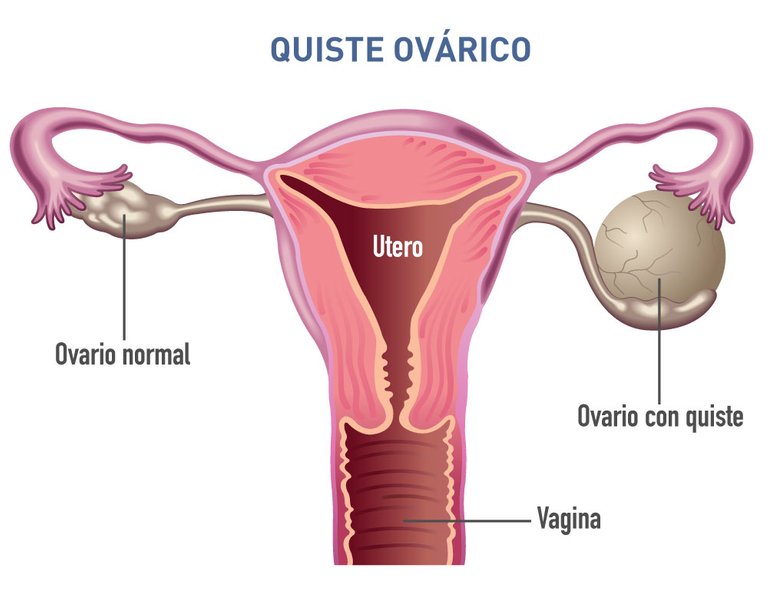
Muchas mujeres tienen quistes de ovarios en algún momento. La mayoría no presentan molestias(o muy poca) y no resultan perjudiciales. Los quistes ováricos suelen desaparecer después de algunos meses, sin embargo, si no lo hacen pueden ocasionar complicaciones.
Sin embargo los quistes ováricos (especialmente los que se han roto pueden producir síntomas graves)
Síntomas
🤧🤧🤧🤧🤧🤧🤧🤧🤧🤧🤧🤧🤧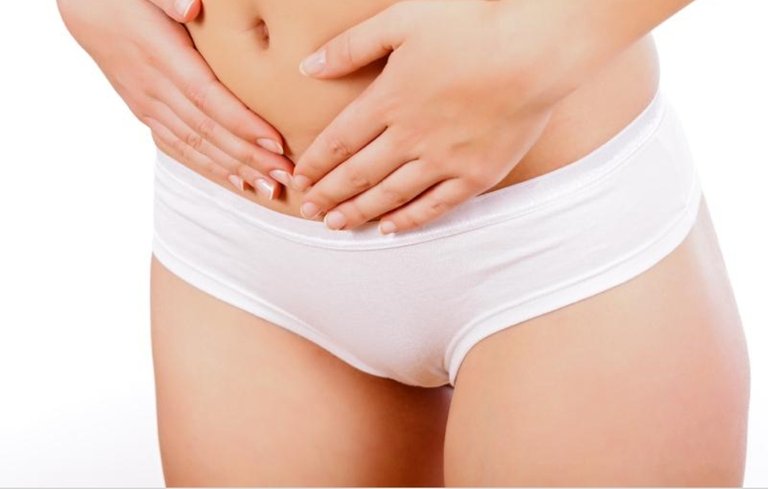
La mayoría de los quistes no provocan síntomas, en algunos casos pueden presentar menstruación irregular, dolor durante las relaciones sexuales o movimientos intestinales irregulares.
Puede haber dolor en la espalda, en la región lateral del cuerpo o en la pelvis
Menstruación anormal, dolorosa irregular o sangrado entre períodos, calambres o vellosidad excesiva.
Dolor pélvico: dolor sordo o intenso en la parte inferior del abdomen, del lado del quiste
Sensación de saciedad o pesadez abdominal
Hinchazón
Signos de complicación
Dolor pélvico o abdominal intenso repentino
Dolor acompañado de vómitos
O piel fría y húmeda, respiración rápida y aturdimiento o debilidad (signos de shock)
Causas
🧐🧐🧐🧐🧐🧐🧐🧐🧐🧐🧐🧐🧐La mayoría se producen a raíz del ciclo menstrual (quistes funcionales). Otros tipos de quistes de ovario son poco frecuentes.
Quistes funcionales:
En los ovarios crecen estructuras similares a los quistes (los folículos) todos los meses. Los folículos producen las hormonas estrógeno y progesterona y liberan un óvulo cuando ovulas.
Si un folículo normal continúa creciendo se denomina quiste funcional:
Existen 2 tipos:
Quiste folicular: aproximadamente en la mitad del ciclo menstrual, un óvulo sale de su folículo y viaja por la trompa de Falopio. Un quiste folicular comienza cuando no se rompe ni se libera el óvulo, sino que continúa creciendo.
Quiste del cuerpo lúteo: cuando un folículo libera al óvulo, comienza a producir estrógeno y progesterona para la concepción. El folículo se llama ahora cuerpo lúteo. A veces se acumula líquido dentro del folículo, lo que provoca que el cuerpo lúteo se expanda y se forme un quiste.
Los quistes funcionales son generalmente inofensivos y raramente provocan dolor y suelen desaparecer por si solos en 2 o 3 ciclos menstruales.
Otros quistes:
Estos no están relacionados con el funcionamiento normal del ciclo menstrual:
Quistes dermoides: estos también se denominan teratomas, pueden contener tejido como cabello, piel o dientes, porque se forman a partir de células embrionarias. No suelen ser cancerosos
Cistoadenomas: se forman en la superficie de un ovario y pueden estar llenos de material acuoso o mucoso.
Endometriomas: se forman a raíz de una enfermedad en la que las células endometriales uterinas crecen fuera del útero (endometriosis). Parte del tejido puede adherirse al ovario y formar un bulto.
Los quistes dermoides y cistoadenomas se pueden agrandar y provocar que el útero se desplace de su posición. Esto aumenta la posibilidad que se produzca una torsión ovárica.
Factores de riesgo:
😳😳😳😳😳😳😳😳😳Problemas hormonales: estos comprenden tomar clomifeno (clomid) un medicamento para la fecundidad que se utiliza para estimular la ovulación
Embarazo: a veces el quiste se forma al ovular y permanece en el ovario a lo largo del embarazo
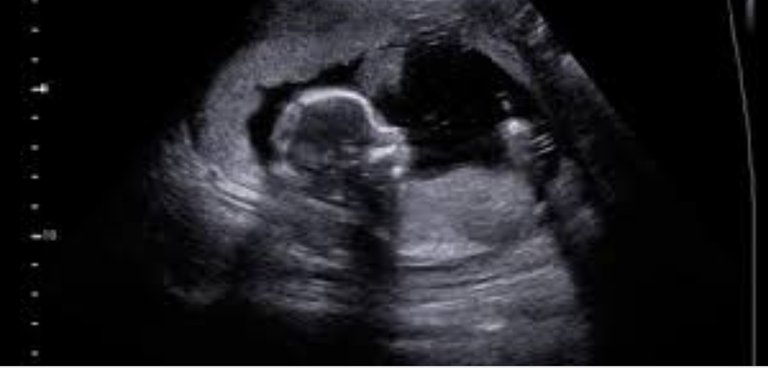
Endometriosis: esta afección provoca que las células endometriales uterinas crezcan fuera del útero.
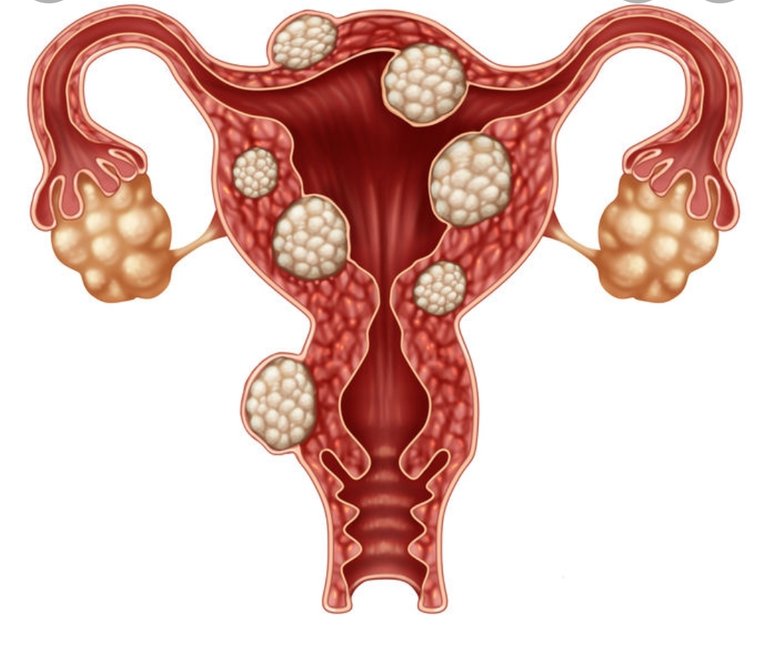
Una infección pélvica grave: si la infección se propaga a los ovarios puede provocar la formación de quistes.
Un quiste previo: si tuviste un quiste es probable que tengas más.
Complicaciones:
🚑🚑🚑🚑🚑🚑🚑🚑🚑Torsión ovárica: aparición abrupta de dolor intenso en la pelvis, náuseas y vómitos, esto puede disminuir o detener el flujo de sangre a los ovarios.
Rotura: dolor intenso y sangrado interno. Mientras mayor es el quiste, el riesgo de rotura es mayor, la actividad vigorosa que afecta la pelvis como el acto sexual vaginal aumenta el riesgo.
Diagnóstico:
👩🏻⚕️👩🏻⚕️👩🏻⚕️👩🏻⚕️👩🏻⚕️👩🏻⚕️👩🏻⚕️Prueba de embarazo: Si esta es positiva puede indicar la presencia de un quiste del cuerpo lúteo.
Ecografía pélvica: permite ver las dimensiones de los quistes, presencia de líquido o no en su interior, características morfológicas (bien definidos o no), etcétera.
Laparoscopia: medio diagnóstico y terapéutico , donde se puede acceder al quiste por vía de mínimo acceso, mediante instrumental correspondiente.
Análisis de sangren CA 125: niveles de sangre elevados de esta proteínas sugieren la posible existencia de cáncer de ovario y en ocasiones en enfermedades no cancerosas como endometriosis, fibromas uterinos y enfermedad inflamatoria pélvica.
Tratamiento
💊💊💉💉🔪🔪🩹🩹Muchos quistes desaparecen por si solos, de lo contrario en tratamiento incluye pastillas anticonceptivas y cirugía.
Depende de la edad:
Conducta expectante: esperar que desaparezca solo.
Medicamentos: anticonceptivos hormonales, usados para prevenir la recurrencia de los quistes, pues estas píldoras no reducen el tamaño de los quistes.
Cirugía: se realiza si es grande, no parece un quiste funcional, si está creciendo y/o si persiste por 2 o 3 ciclos menstruales.
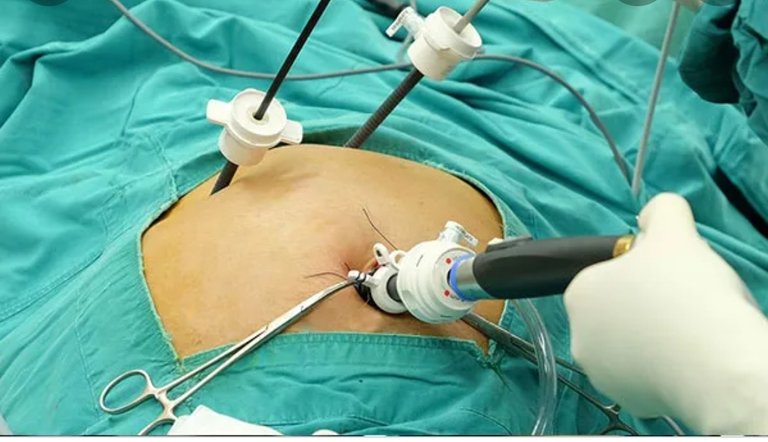
Se pueden realizar 2 técnicas:
Cistectomía ovárica (sin extraer el ovario).
Ooforectomía (extraer le ovario afectado y dejar el otro intacto).
Espero que les haya gustado….saludos.🌺🌺🌺
English
Hello everyone🙋🏻♀️… today I want to talk to you about a pathology that has been evolving for me for years…..ovarian cysts…., a topic that deeply affects me. About 3 or 4 years ago, while doing exercises to strengthen the spine, I began to experience discomfort in the lower abdomen (lower abdomen) and a feeling of abdominal heaviness, especially in the evening hours, my belly swelled, it seemed pregnant.
After several weeks and the symptoms did not disappear, I decided to go see a gynecologist friend of mine to have a gynecological ultrasound (USD) …and there😱😱 I was diagnosed with a right ovarian cyst, that immediately caused me concern; I have never been pregnant and with this diagnosis my hopes diminished😭😭. As indicated by the treatment protocol for this condition, we waited another month for another evolutionary ultrasound to see how the cyst behaved, to make it more distressing, the next month…. Another cyst😲😲😥😥, but in the left ovary, realizing that the disease was getting complicated, I started with natural and traditional treatment🍃🌿🌱 and hormones for a month, so every month we repeated the USD. In each ultrasound we saw how these were increasing in size, one day … by the grace of the Lord, I woke up and to my astonishment and that of many doctors, I expelled the right cyst, but the other one did not have the same luck.
My primary gynecologist wanted to wait for this cyst to disappear on its own, to avoid surgery, because as there had been no previous pregnancies, I did not want to cause damage that would make this process difficult in the future. For more than a year I was followed monthly by USD, months of pain in the lower abdomen, menstrual disorders (irregular bleeding), a feeling of abdominal heaviness and swelling that caused me to wear loose clothes, since tight ones caused me pain, a year of not being able to be sitting for hours, because the pain increased in these cases🤧🤧. After a year of continuing like this, without changes, of performing any treatment that would prevent us from reaching surgery, the left ovarian cyst began to change its characteristics... worrying the gynecologist that it would evolve into malignancy... and we arrived where we did not want …the surgery😓😓. I had minimal access surgery (laparoscopy), a simple procedure, in my case without complications, without damage to my ovaries, although I still haven't gotten pregnant according to the surgeon, my ovaries are clean jj (what a relief ), even Some time I do an ultrasound to see if a new cyst appears, and right now I'm waiting for another one to confirm the existence of another.
Because of everything this disease means to me, how it has affected my personal and professional life, my emotional state, because of everything it implies, I decided to tell you about it, everything I felt, the anguish, the worries. I hope it works for you.😊😊
Ovarian cyst:
°°°°°°°°°°°°°°°°°°°°°°°°°°°°°°°°°°°°°
Membranous sac or sac (cyst) containing a solid or liquid substance within an ovary or on its surface.
Photo
Many women have ovarian cysts at some point. Most have no discomfort (or very little) and are not harmful. Ovarian cysts usually go away after a few months, however if they don't they can cause complications.
However ovarian cysts (especially those that have ruptured can cause severe symptoms)
Symptoms
🤧🤧🤧🤧🤧🤧🤧🤧🤧🤧🤧🤧🤧Most cysts do not cause symptoms, in some cases they may present irregular menstruation, pain during sexual intercourse or irregular bowel movements.
There may be pain in the back, in the lateral region of the body or in the pelvis
Abnormal, painful irregular menstruation or bleeding between periods, cramps or excessive hairiness.
Pelvic pain: dull or aching pain in the lower abdomen, on the side of the cyst
Feeling of fullness or abdominal heaviness
Swelling
signs of complication
Sudden severe abdominal or pelvic pain
Pain accompanied by vomiting
OR cold, clammy skin, rapid breathing, and lightheadedness or weakness (signs of shock)
Causes
🧐🧐🧐🧐🧐🧐🧐🧐🧐🧐🧐🧐🧐Most are produced as a result of the menstrual cycle (functional cysts). Other types of ovarian cysts are rare.
Functional cysts:
Cyst-like structures (follicles) grow in the ovaries every month. The follicles produce the hormones estrogen and progesterone and release an egg when you ovulate.
If a normal follicle continues to grow, it is called a functional cyst:
There are 2 types:
Follicular cyst: About halfway through the menstrual cycle, an egg leaves its follicle and travels down the fallopian tube. A follicular cyst begins when the egg does not rupture or release, but continues to grow.
Corpus luteum cyst: When a follicle releases the egg, it begins to produce estrogen and progesterone for conception. The follicle is now called the corpus luteum. Sometimes fluid builds up inside the follicle, causing the corpus luteum to expand and form a cyst.
Functional cysts are generally harmless and rarely cause pain and usually go away on their own within 2-3 menstrual cycles.
Other cysts:
These are not related to the normal functioning of the menstrual cycle:
Dermoid cysts: These are also called teratomas, they can contain tissue such as hair, skin or teeth, because they are formed from embryonic cells. They are not usually cancerous
Cystadenomas: form on the surface of an ovary and may be filled with watery or mucous material.
Endometriomas: form from a disease in which uterine endometrial cells grow outside the uterus (endometriosis). Some of the tissue may stick to the ovary and form a lump.
Dermoid cysts and cystadenomas can become enlarged and cause the uterus to shift out of position. This increases the possibility of ovarian torsion.
Risk factors:
😳😳😳😳😳😳😳Hormonal problems: These include taking clomiphene (clomid) a fertility drug used to stimulate ovulation
Pregnancy: Sometimes the cyst forms when you ovulate and remains in the ovary throughout the pregnancy
Photo
Endometriosis: This condition causes uterine endometrial cells to grow outside the uterus.
Photo
A serious pelvic infection: If the infection spreads to the ovaries it can lead to cyst formation.
A previous cyst: If you had one cyst, you probably have more.
Complications:
🚑🚑🚑🚑🚑🚑🚑🚑Ovarian torsion: Abrupt onset of severe pelvic pain, nausea, and vomiting, this can decrease or stop blood flow to the ovaries.
Rupture: intense pain and internal bleeding. The larger the cyst, the greater the risk of rupture, vigorous activity that affects the pelvis such as vaginal intercourse increases the risk.
Diagnosis:
👩🏻⚕️👩🏻⚕️👩🏻⚕️👩🏻⚕️Pregnancy test: If this is positive, it may indicate the presence of a corpus luteum cyst.
Pelvic ultrasound: allows you to see the dimensions of the cysts, the presence or absence of fluid inside them, morphological characteristics (well defined or not), etc.
Laparoscopy: diagnostic and therapeutic means, where the cyst can be accessed through a minimal access route, using the corresponding instruments.
Blood test CA 125: Elevated blood levels of this protein suggest the possible existence of ovarian cancer and sometimes non-cancerous diseases such as endometriosis, uterine fibroids and pelvic inflammatory disease.
Treatment
💊💊💉💉🔪🔪Many cysts go away on their own, otherwise treatment includes birth control pills and surgery.
It depends on the age:
Watchful waiting: expect it to go away on its own.
Medications: Hormonal contraceptives, used to prevent recurrence of cysts, as these pills do not reduce the size of cysts.
Surgery: is performed if it is large, does not look like a functional cyst, if it is growing and/or if it persists for 2 or 3 menstrual cycles.
2 techniques can be performed:
Ovarian cystectomy (without removing the ovary).
Oophorectomy (remove the affected ovary and leave the other intact).
I hope you liked it….regards.🌺🌺🌺
Bibliographic references
https://www.google.com/search?q=ovarian+cysts&oq=ovarian+cysts&aqs=chrome.1.69i57j0i13l4.6489j0j1&client=ms-android-xiaomi&sourceid=chrome-mobile&ie=UTF-8#wptab=s :H4sIAAAAAAAAAOMwe8SYyC3w8sc9YamISWtOXmMM4lLwTU3JTM7MS3XJLE5NLE71y89LKSpNDylKTSzJTc0rKRYS52JzzSvJLKkU4pXi5uLUz9U3MKyoTMsSEuViCaksSEUStsgxNuVZxKpQWJpZXJKqkF92eGFRZnK-wqOGKQq5IHsSQUbmFwMAapnGm4kAAAA
https://www.mayoclinic.org/es-es/diseases-conditions/ovarian-cysts/diagnosis-treatment/drc-20353411
Que pena que sufras de esa enfermedad, que pueda afectar tu vida reproductiva, pero veras que todo va estar bien, no vas a tener más quiste, así que sigue adelante, me gusto mucho la forma en que organizastes el post, escribes muy bien, muy bonito, se ve que eres una excelente profesional, es una enfermedad muy frecuente que afecta a miles de mujeres en todo el mundo, tiene múltiples causas y algunas de ellas se desconocen , en ocaciones los quistes desaparecen y en otras dejan de aparecer, así que ten calma y tranquilidad veras que toda tu vida se llenará de alegría y vas a estar bien, saludos...
Muchas gracias por su comentario, hago todo lo posible porque lo publicado sea del agrado de los demás y sobre todo tenga calidad, también le agradezco su mensaje de apoyo, ojalá y sea así.🙏🙏 Saludos y feliz fin de semana
Congratulations @jazmin89! You have completed the following achievement on the Hive blockchain and have been rewarded with new badge(s):
Your next target is to reach 700 upvotes.
You can view your badges on your board and compare yourself to others in the Ranking
If you no longer want to receive notifications, reply to this comment with the word
STOPCheck out the last post from @hivebuzz:
Support the HiveBuzz project. Vote for our proposal!
¡Felicitaciones!
1. Invierte en el PROYECTO ENTROPÍA y recibe ganancias semanalmente. Entra aquí para más información.
3. Suscríbete a nuestra COMUNIDAD, apoya al trail de @Entropia y así podrás ganar recompensas de curación de forma automática. Entra aquí para más información sobre nuestro trail.
4. Creación de cuentas nuevas de Hive aquí.
5. Visita nuestro canal de Youtube.
Atentamente
El equipo de curación del PROYECTO ENTROPÍA